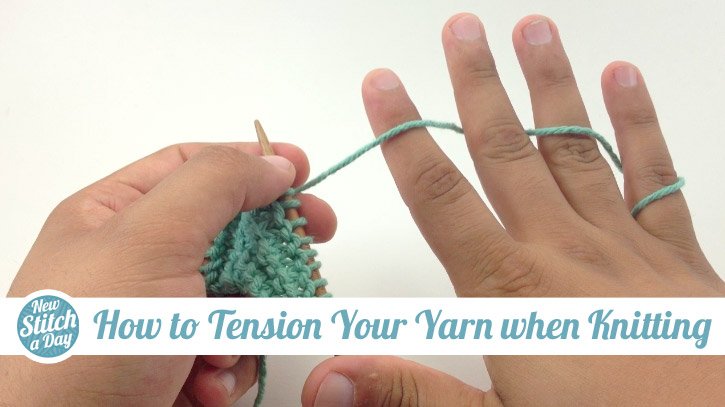
Enhance Your Knitting Skills: How To Hold Yarn When Knitting
When it comes to knitting, mastering the art of how to hold yarn is essential for a smooth and enjoyable experience. By finding the right method that works best for you, you can improve your knitting technique and create beautiful projects with ease. Whether you prefer the English style, Continental style, or a hybrid approach, the key is to find comfort and efficiency in your movements. In this article, we will explore various ways to hold yarn when knitting, so you can find the perfect fit for your knitting journey.
How to Hold Yarn When Knitting: A Comprehensive Guide for Beginners
Welcome, all knitting enthusiasts! If you’re just starting out on your knitting journey, one of the essential skills you need to master is how to hold yarn correctly. The way you hold your yarn can significantly impact the speed, tension, and overall enjoyment of your knitting project. In this detailed guide, we will explore various techniques and tips on how to hold yarn when knitting like a pro. So, grab your needles and let’s dive in!
The Basic Concept of Yarn Holding
Before we jump into specific yarn-holding techniques, let’s understand the basic concept behind it. When knitting, yarn tension is crucial for creating even and consistent stitches. The way you hold your yarn affects this tension and, ultimately, the outcome of your project. By finding a comfortable and efficient yarn-holding method, you can enhance your knitting experience and achieve better results.
Common Yarn-Holding Techniques
1. The English Method
The English method, also known as throwing, is a popular yarn-holding technique where the yarn is held in the right hand. To use this method, wrap the yarn around your pinky finger, bring it over your index finger, under the middle and ring fingers, and over the top of the index finger. This allows you to easily pick up the yarn with the needle to create stitches.
2. The Continental Method
The Continental method, also known as picking, involves holding the yarn in the left hand. To use this technique, wrap the yarn around your pinky finger, bring it under the ring and middle fingers, and over the index finger. This method is favored for its efficiency and speed, making it a popular choice among experienced knitters.
3. The Flicking Method
The flicking method combines elements of both English and Continental styles. In this technique, the yarn is held in the left hand like in the Continental method, but the index finger is used to flick the yarn onto the needle, similar to the English method. This method offers a good balance between speed and tension control.
Choosing the Right Yarn-Holding Technique for You
When deciding on a yarn-holding technique, it’s essential to consider factors such as comfort, speed, and tension control. Experiment with different methods to find the one that feels most natural to you. Remember, there is no right or wrong way to hold yarn when knitting – the key is to find what works best for you.
Tips for Improving Your Yarn-Holding Skills
Whether you’re a beginner or an experienced knitter looking to refine your technique, here are some tips to help you improve your yarn-holding skills:
1. Practice Regularly
Like any skill, mastering yarn holding takes practice. Set aside time each day to knit and focus on improving your technique. The more you practice, the more comfortable and efficient you will become.
2. Maintain Consistent Tension
Consistent tension is key to achieving uniform stitches in your knitting. Pay attention to how tightly or loosely you are holding the yarn and make adjustments as needed to maintain even tension throughout your project.
3. Relax Your Hands
Tension in your hands can lead to tension in your knitting. Make sure to relax your hands and wrists while holding the yarn to prevent strain and fatigue. Finding a comfortable and relaxed position will help you enjoy knitting for longer periods.
4. Seek Guidance from Experienced Knitters
Don’t be afraid to reach out to experienced knitters for tips and advice on yarn holding. Join knitting groups or forums, attend workshops, or take classes to learn from others and improve your skills. Knitting is a community-driven craft, and fellow knitters are always happy to share their knowledge.
Mastering the art of yarn holding is a fundamental step in becoming a confident and skilled knitter. By experimenting with different techniques, practicing regularly, and seeking guidance from experienced knitters, you can improve your yarn-holding skills and take your knitting projects to the next level. Remember, the joy of knitting lies not just in the finished product but also in the process of creating something beautiful with your own hands. So, embrace the journey, enjoy the process, and happy knitting!
how to knit: how to hold your needles | beginner knitting tutorial
Frequently Asked Questions
How should I hold yarn when knitting?
There are various ways to hold yarn while knitting, but the most common methods include the English method (throwing the yarn with your right hand) and the Continental method (picking the yarn with your left hand). Choose the method that feels most comfortable and allows you to maintain tension while smoothly working your stitches.
What is the best way to prevent yarn from tangling while knitting?
To prevent yarn tangling, use a yarn bowl or yarn holder that allows the yarn to unwind smoothly as you knit. Additionally, try to keep your yarn ball or skein in a place where it can freely rotate without getting caught on other objects or itself.
How tight should I hold the yarn when knitting?
It is important not to hold the yarn too tightly while knitting, as this can lead to stiff and uneven stitches. Aim for a relaxed grip that allows the yarn to flow easily through your fingers as you work each stitch. Practice maintaining consistent tension to achieve uniform results in your knitting.
Final Thoughts
In conclusion, mastering the technique of how to hold yarn when knitting is essential for a smooth and enjoyable knitting experience. Whether you choose to hold the yarn in your right hand, left hand, or using a combination of both, find a method that feels comfortable and allows for even tension. Consistent practice and experimenting with different yarn-holding styles will help you develop your own unique knitting rhythm. Remember, there is no one right way to hold yarn when knitting – so have fun and find what works best for you!


